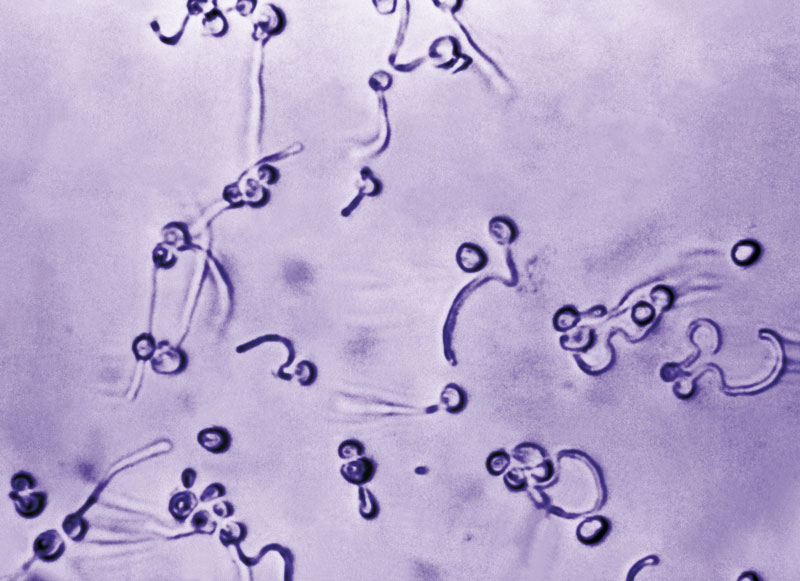
CDCCandida sp., which causes opportunistic infections, seen under a microscopeCDC
One sensor detects methane, another propane, another amines and sulfur odors. Together, six sensors take 20 seconds to identify volatile organic compounds released by what might be colonies of the fungus Candida growing in a Petri dish. The information is then analyzed by an AI computer program that indicates whether it is indeed the microorganism responsible for candidiasis, an opportunistic infection that is relatively common in women and people with weakened immune systems and is often confused for an allergic reaction, dermatitis, or genital herpes. This is how the e-nose developed at the Federal University of Pernambuco (UFPE) works. Similar devices are already used to identify toxic gases and food contaminations (see Pesquisa FAPESP issue no. 228). Within just a few minutes, the technology can differentiate seven species of Candida, while a laboratory analysis would take three to seven days. Testing showed an accuracy of between 95.87% and 97.7% (Scientific Reports, January 10).
Republish